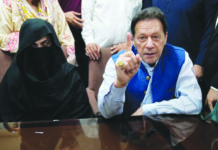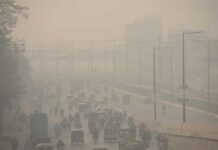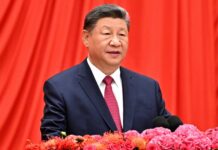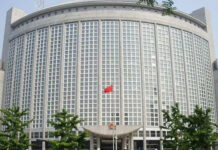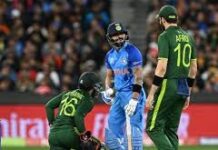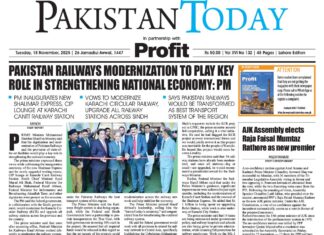Not too long ago, a manuscript’s journey from a writer’s desk to a reader’s hands could feel like a marathon. Weeks, sometimes years, passed between finishing a piece and seeing it in print. You sent it to publishers, waited through edits, and prayed it wouldn’t be rejected. Even then, printing and distribution took their sweet time. Now, a few keystrokes can beam a story from a bedroom in Lahore to a phone in New York before the tea gets cold. The shift isn’t just about speed; it’s reshaping the very nature of Pakistani literature.
For decades, our literary scene lived mostly on paper in the form of Urdu and English novels, serialized magazine fiction and slim volumes of poetry. The gatekeepers were few and the paths were narrow. Today, the internet has blown those gates wide open. Blogs, self-publishing sites, online literary journals and social media platforms have created an endless digital stage. Facebook groups host serialized novels, Instagram feeds overflow with poetry and Wattpad has given young writers a global audience. Now the biggest change has occurred. A teenager in Skardu can post a short story at midnight and have it read by someone in Karachi or Canada by morning. The old geographical and institutional barriers have all but disappeared. That doesn’t just make publishing easier; it changes who gets to speak and who gets heard.
Perhaps the most exciting development is the sheer diversity of voices. Digital spaces have amplified writers who were once sidelined, such as women, rural storytellers, and marginalized communities, allowing them to publish directly to readers without seeking permission. Social media poetry, micro-fiction and community-driven writings have become legitimate literary forms. This isn’t literature trapped in dusty libraries or elite bookshops. It’s part of everyday life. A Facebook comment thread can turn into a real-time book club, with the author responding to readers as the story unfolds. That level of interaction simply didn’t exist in the print-only era. No doubt, the medium shapes the message. Short and punchy forms dominate online like micro-poetry, flash fiction and quote-based storytelling. Instagram poets’ pair verses with striking visuals; Facebook writers craft tiny cliffhangers designed to keep the thumb away from scrolling.
A close look also reveals a clear shift in themes. Love and nostalgia still have their place, but digital spaces have emboldened writers to tackle political issues, gender inequality and social injustice with a candour rarely seen in print publishing. Freed from some of the constraints of traditional gatekeepers, the tone has become bolder, sometimes confrontational and often urgent. Of course, the open gates let in more than just fresh talent. The flood of content can drown out quality. Viral popularity often rewards speed and emotional punch over careful craft. Some pieces feel more like social media stunts than literature. In the online world, short attention spans are yet another problem for today’s authors. When your audience is used to skimming endless feeds, now, it is harder than ever to convince them to sit with a 300-page novel. The risk is that literature becomes another form of quick consumption, forgettable as soon as the next post appears.
And let’s not ignore the darker side, which is plagiarism. In Pakistan’s loosely regulated digital sphere, entire works are often reposted without credit. A story can gain thousands of likes for someone who didn’t even write it. Such practice hurts both the livelihood and the motivation of genuine writers. So how do we keep the good while managing the bad? It is possible by treating digital and print media as partners, not rivals.
Publishers could run hybrid models, serializing novels online to build readership, then releasing polished print editions. Through literary festivals and live-stream sessions, it is possible to engage all book lovers. For writers, the internet is a double-edged sword. No doubt, it makes sharing easier but it also demands discipline. The same tools used for quick posting can be harnessed for deeper research, richer collaboration and more thoughtful storytelling. Interactive fiction, audio readings and multimedia projects could push Pakistani literature into exciting and uncharted territory.
The pen hasn’t disappeared; it’s simply found a new paper. Stories now live on screens as much as on shelves. If we hold on to the qualities that have always defined good writing, then it is possible that this era could expand our literature instead of eroding it. In the end, it’s not about the medium. Whether words are inked onto a page or glow on a screen, their purpose is the same: to move, to challenge and to connect.
Right now, Pakistani literature’s digital chapter is still being drafted. There’s an explosive creativity but also a loss of patience for slow and layered narratives. Whether we elevate our literature or dilute it will depend on the choices we make in the next few years. Rejecting change isn’t an option. The question is whether we can guide it, keeping our standards high, crediting creators and making sure online platforms amplify diverse, thoughtful voices rather than bury them under noise.
The pen hasn’t disappeared; it’s simply found a new paper. Stories now live on screens as much as on shelves. If we hold on to the qualities that have always defined good writing, then it is possible that this era could expand our literature instead of eroding it. In the end, it’s not about the medium. Whether words are inked onto a page or glow on a screen, their purpose is the same: to move, to challenge and to connect. The responsibility lies with us, readers and writers alike, to make sure the stories we pass forward are ones worth keeping.



